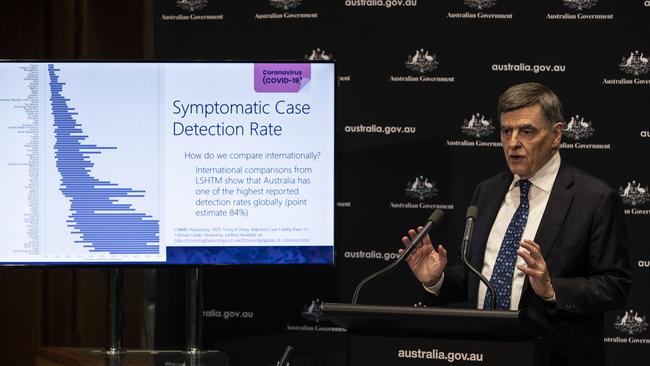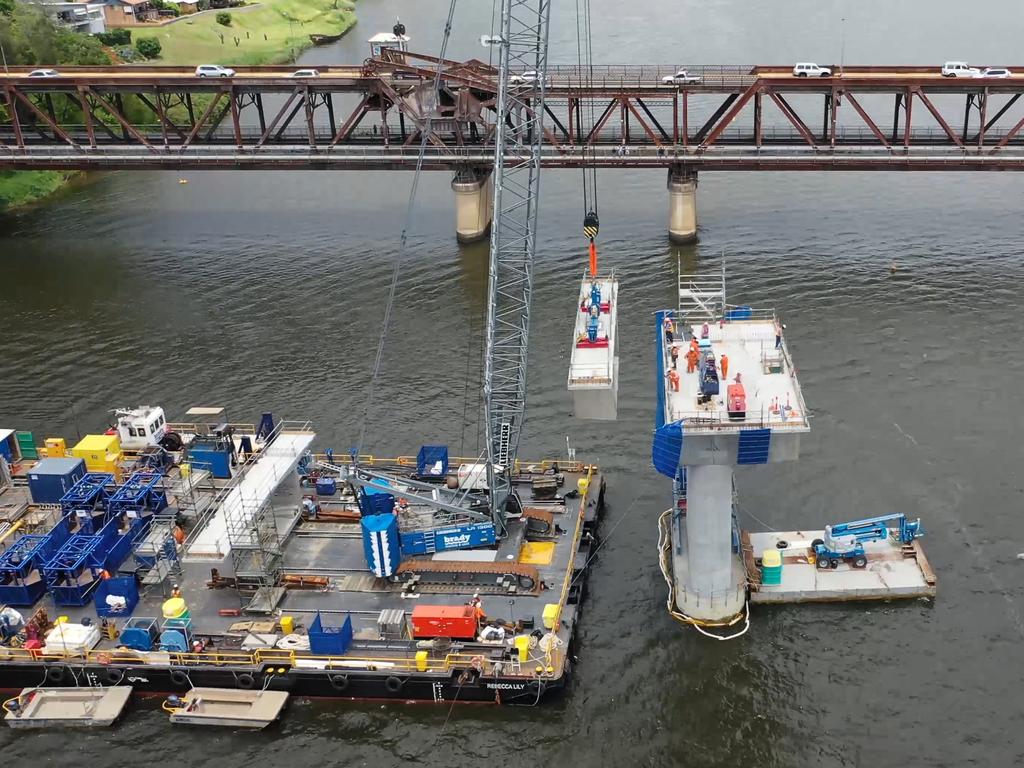Long road to life without COVID-19
The PM reveals a three-step process that will decide whether social restrictions can be relaxed to avoid a new wave of infections.

A three-step process involving wider testing for COVID-19, enhanced tracing of cases and expanded capacity to control outbreaks will decide whether social restrictions can be relaxed from next month.
Revealing a four-week deadline for reviewing the next steps on restrictions, Scott Morrison said that despite a sharp decline in new coronavirus cases across Australia, easing measures too quickly could trigger a new wave of infections.
Under pressure from business leaders and industry groups to re-open the economy as early as possible, the national cabinet on Thursday adopted a cautious approach to lifting measures that have helped to flatten the nation’s infection curve.
As the rate of new COVID-19 cases falls on the back of Australia leading the world in detection rates, the Prime Minister said it was normal for Australians to want to return “to how it was” but he warned of not repeating the mistakes of other countries.
“Let’s look to the experience of what has happened overseas,” Mr Morrison said.
“If you ease off too quickly too early, then you end up making the situation even worse and I don’t just mean in the health terms.
“If you move too early and the health response gets out of control, then the economic consequences will be even worse. And so we need to keep it finely balanced — that is what we are seeking to do.”

The national cabinet has prioritised easing bans on some elective surgery as early as next Tuesday, and getting schools back to full capacity by the end of May. It is also drawing up plans to get “high-value, low-risk” sectors back to work and support an accelerated rollout of infrastructure projects.
National cabinet failed to reach a consensus on when schools would re-open to all students, despite pleas from Mr Morrison to get children back into classrooms. State and territory leaders agreed on seven national principles for school education to guide decisions during the pandemic.
States and territories are also considering lifting restrictions that went further than the Australian Health Protection Principal Committee guidelines.
Mr Morrison said the three-stage process to help Australians return to work and resume some recreational activities was focused on: broader testing; improved tracing of COVID-19 cases using new technology, with the government in the process of developing an opt-in tracking app; and strengthening capacity to contain coronavirus hotspots.
“If we are going to move to an environment where there are fewer restrictions, then you need these three things in place,” Mr Morrison said. “The national cabinet agreed that we will use the next four weeks to ensure that we can get these in place. And the baseline restrictions that have been set some weeks ago will remain in place until we’re able to achieve those three goals. We’ll be reviewing that in the next four weeks.”
New international modelling presented to federal, state and territory leaders on Thursday showed Australia was operating one of the top COVID-19 testing regimes in the world, with more than 374,500 tests completed.
Since the first COVID-19 case was reported in January, the number of infections has stabilised with 6465 cases across the country, including 3747 people who have recovered from the disease.
Chief Medical Officer Brendan Murphy said while Australia’s numbers were “very encouraging”, with fewer than 50 cases a day this week, there were issues around easing social restrictions.
Professor Murphy said Australians must “hold the course while we get ourselves completely ready so that we can live these next difficult months together”. “If we relax the distancing measures that are stopping or reducing that community transmission, that will inevitably lead to some more outbreaks of community transmission,” he said.
“Unless we are prepared as a nation to detect those outbreaks really early, and get on top of them, and control them, and isolate the cases, and quarantine the contacts, we could end up with large community outbreaks that could lead to situations like we’ve all seen every night on the nightly news in high-income countries with good health systems”
Professor Murphy said Australia could not afford to relax restrictions until the public health system was fully prepared to respond to coronavirus outbreaks.

Australia is leading the world in detection rates of COVID-19 with a strike rate of 84 per cent, according to international modelling that shows countries including the US and Britain are struggling to contain the pandemic. The modelling shows Australia’s rigorous testing regime was significantly ahead of any other country that had recorded more than 10 deaths.
Data compiled by the Centre for Mathematical Modelling of Infectious Diseases, encompassing more than 80 countries, revealed that in comparison with Australia, Britain had a 3.6 per cent detection rate and the US a low 12 per cent. The only nation to come close to Australia was the United Arab Emirates with a detection rate of 65 per cent.
Health Minister Greg Hunt said the modelling, which would guide the path to lifting social-distancing restrictions, showed there was a high degree of confidence in the numbers.
“These findings are good news for Australians,” Mr Hunt said.
“In particular they say that our testing is one of if not the most accurate and representative systems in the world. That means we are finding the cases and tracking the cases which in return reduces the risk for the whole population.
“It means that as a country we are on the right track.”
University of Queensland and CSIRO are developing an early warning surveillance system to track COVID-19 prevalence through tracing coronavirus in raw sewage.







To join the conversation, please log in. Don't have an account? Register
Join the conversation, you are commenting as Logout